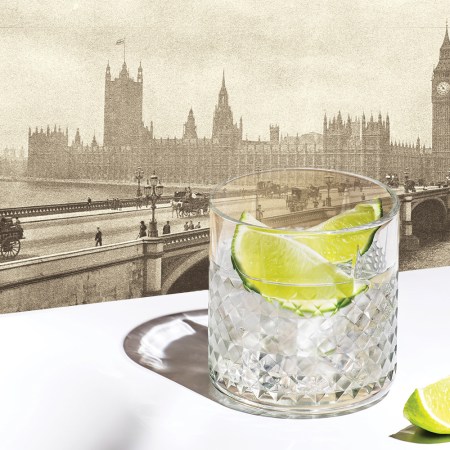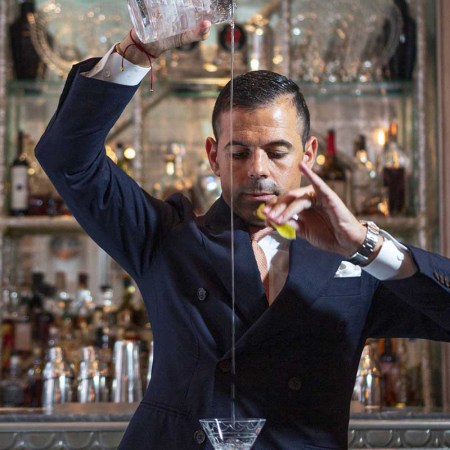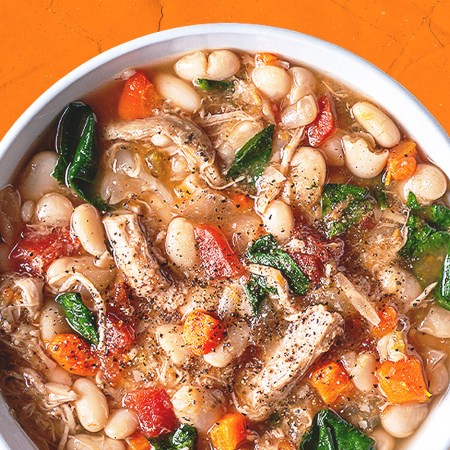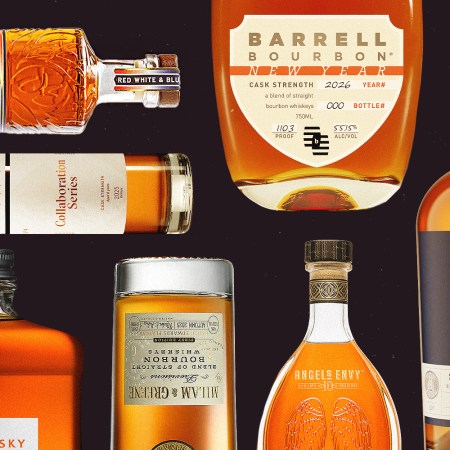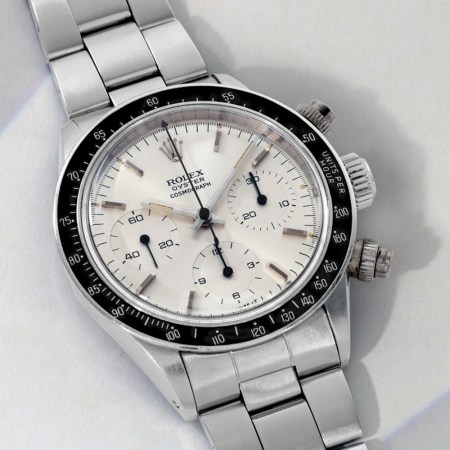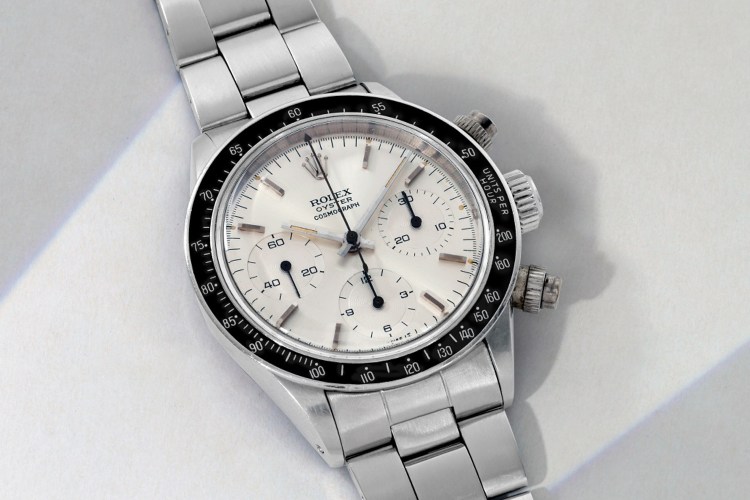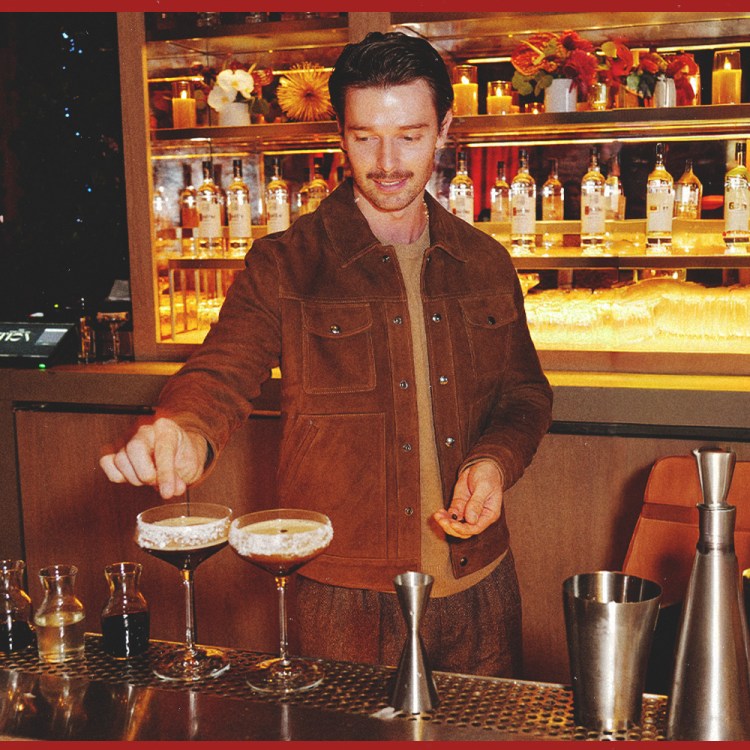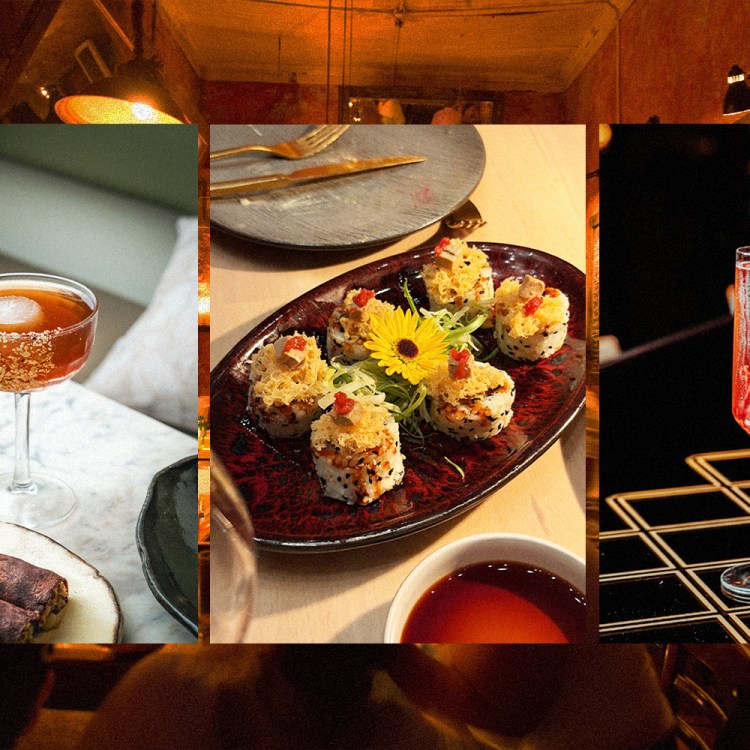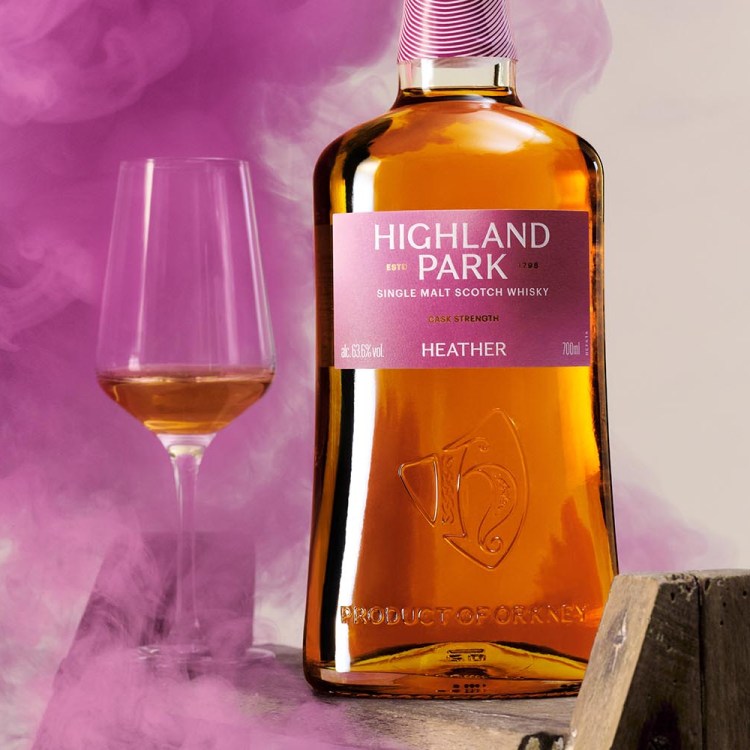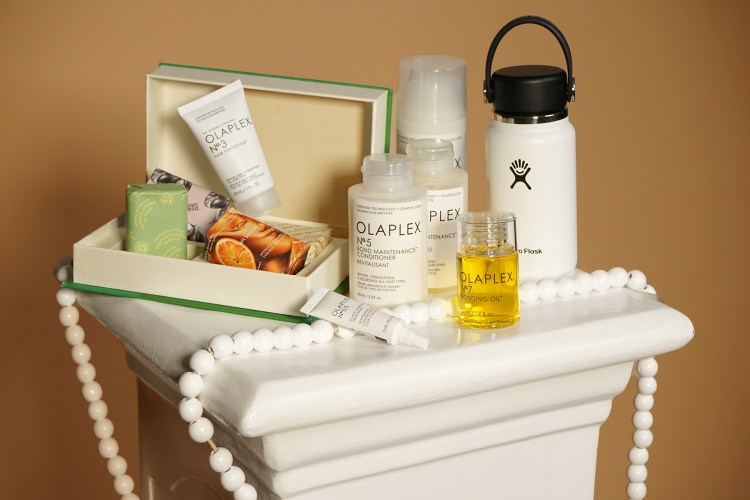Since opening in 2008 in London, The Connaught Bar and its bartending team have racked up accolades, including a World’s Best Bar win in 2020 and 2021 (it’s still at No. 5 on that annual list). Their signature drink? The martini, served bespoke with housemade bitters and special vermouth blends from a drinks trolley. And while some of that cocktail’s appeal stems from the presentation, there’s obviously a certain craft behind the drink.
To perfect that craft, we’re happy to share an excerpt from the just-released cocktail book The Connaught Bar: Recipes and Iconic Creations, as overseen by mixologist Agostino “Ago” Perrone (a prior World’s Best Bartender winner). The cocktail tome presents 100 different drinks ranging in complexity and style, but it begins (as it should) with The Connaught Martini. Perrone created the book with co-authors Maura Milia (Connaught Bar Manager) and Giorgio Bargiani (Assistant Director of Mixology, who received this year’s International Bartender of the Year award at Tales of the Cocktail).
Below, a guide to The Connaught’s world-famous drink. Cheers.
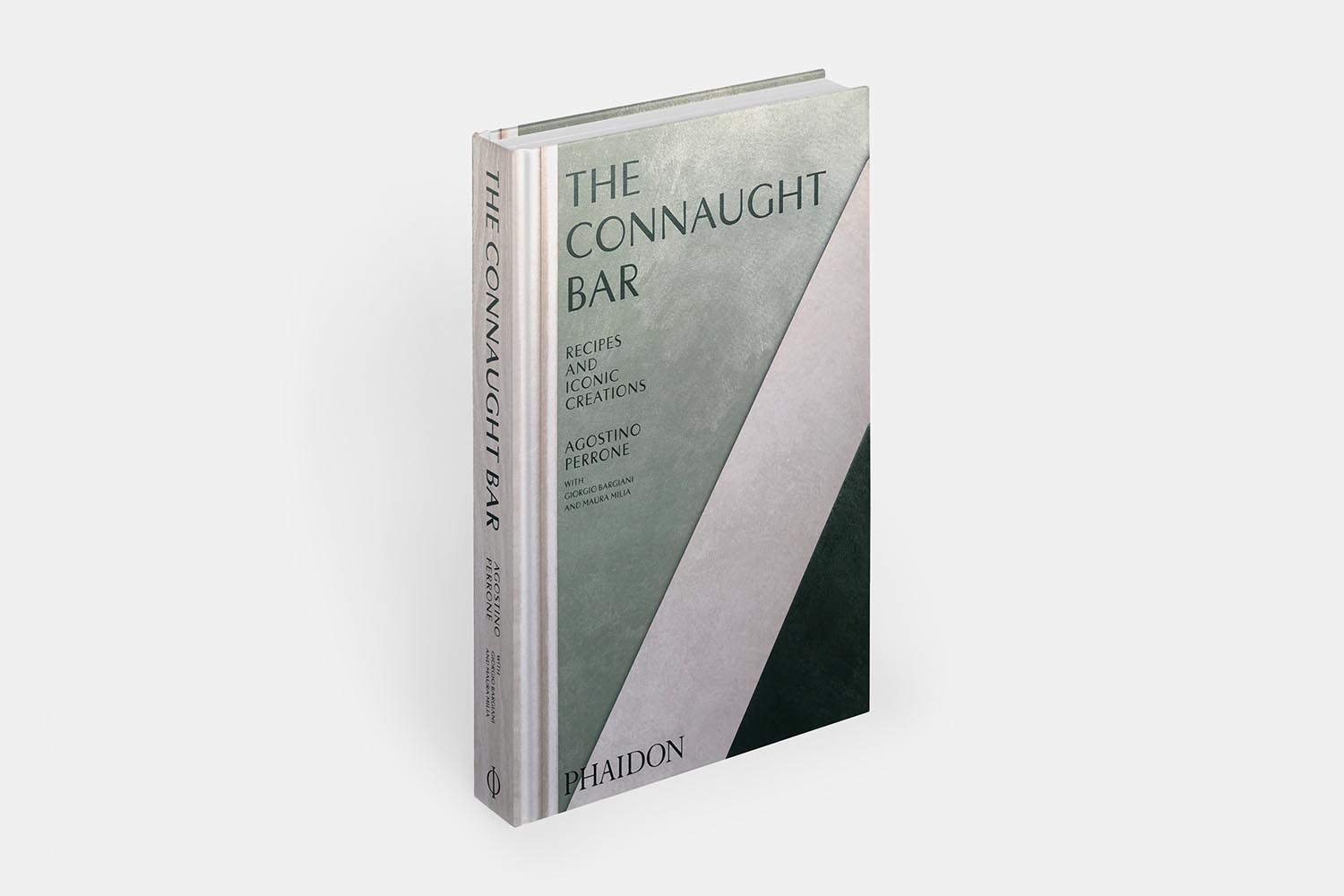
At once the simplest and most challenging of all cocktails, a Martini cocktail reveals the mixer’s passion in every sip. At its best, the Martini transcends from mere cocktail to a concise and grand gesture that the workday is over, and the evening has begun. Anyone can make a Martini. Skill isn’t required to combine gin and vermouth in a glass. But to make a great Martini cocktail, even a better Martini cocktail than the one before, can be a lifelong pursuit.
Is the art in the proportions? It seems as if the measures are the starting point of any conversation about Martini mixing. Then comes the brands of gin, vodka and vermouth. Yes, great gin, vodka and vermouth are required. Yet there is so much more. One of the most important aspects of the best Martini cocktails is that they are personal expressions. They are as unique to the mixer as a painting is to an artist.
While most seasoned Martini cocktail drinkers tell the bartender exactly how they would like their Martini cocktail made, there is an adventurous group who put their faith and trust in the bartender. By saying, “as you prefer,” you taste the bartender’s personality, the bartender’s true talent. When I first came to London, I experienced Martini cocktails at the hands of the masters. Peter Dorelli at the Savoy, Salvatore Calabrese at 50 St. James, Alessandro Palazzi at Dukes, Giuliano Morandin at the Dorchester. These masters of effortless hospitality each had their own style. I wanted to create the same when I arrived at the Connaught Bar.
The Drinks Trolley
We prepare our Martini cocktails tableside because the Martini is arguably the most personal of all drinks served today. More than simply mixing, we prefer to take our guests on a journey to flavor perfection.
Our trolley is essentially a simple portable bar, and far from a new concept. Although drink trolleys were used back in the late 1800s, they exploded onto the scene when Prohibition was repealed in the United States in the 1930s. Restaurants in New York were not allowed to have bars that were visible to their guests, because it was thought a visible bar would be an irresistible temptation to otherwise temperate diners. To circumvent this law, bartenders stepped out from behind their hidden bars, loaded service trolleys and mixed diners’ drinks tableside. While this service style faded nearly into obscurity until the cocktail revival of the late 1990s and 2000s, we dearly love the added one-on-one time it affords us to spend with our guests. We keep a selection of guests’ favorite gins and vodkas plus bottles of our house blend vermouth in the trolley’s cabinet. On top are wells filled with olives and lemons as well as cocktail sticks (toothpicks). When a Connaught Martini is ordered, we go to the back of the bar to fill the mixing glass with ice and then we roll out the trolley, ready to perform.
6 Life Lessons From the World’s Best Bartender
Giorgio Bargiani is the International Bartender of the Year, but he has advice that transcends impeccable hospitalityThe Bitters
The Martini cocktail is approaching its 140th birthday. Cocktail pioneer Harry Johnson added dashes of Boker’s bitters and curaçao to his Martini cocktail recipe in 1888. More often than not, orange bitters were the preferred addition during the drink’s first decades of popularity. Pedro Chicote, the father of modern Spanish bartending and author of many game-changing cocktail books in the 1920s and 1930s, enhanced his Martini cocktail with four dashes of Angostura Bitters. The truth is, the addition of bitters to this simple sip of gin and vermouth is the ideal place to add your personal touch, to create a Martini cocktail of your very own. Although most bars today omit the bitters, at the Connaught Bar we have created a series of bitters that allow us to personalize each Connaught Martini to our guests’ palates.
We present this option on our drinks trolley. Five little dropper bottles of bespoke bitters are the key to our version of the Martini cocktail. Dr Ago’s is a ginseng and bergamot bitters that is citrusy, woody and energizing. Dry lavender is both floral and calming with an aroma similar to rosemary and thyme. Coriander seeds impart a spicy, dark chocolate aroma that complements the botanicals in gin. Tonka bean blended with apricot kernels offers a sweet, woody aftertaste and provides a silky contrast to the gin’s explosion of flavors. Black cardamom is both minty and citrusy, adding an extra touch of spice to the drink. How do you make the right choice? We have a business card-sized flavor mat printed with the names of each of the bitters. We place a drop of each in the appropriate square and let you smell each aroma. Then it is your choice which goes in and how much.
We gently pour about 2 ml or a scant 1/2 teaspoon of your chosen bitters using a dropper around the rim of a coupette. Because our bitters are diluted with spirit, they are not as intensely concentrated as an Angostura or other commercial bitters.
The Vermouth
Our vermouth is a blend, not a single brand or style. We blend an extra dry vermouth, a dry floral vermouth and a bianco vermouth together to achieve the right balance of dryness, floral notes and a hint of chocolaty sweetness. I selected the three vermouths from the older and better-known brands. Piquepoul and catarratto, clairette blanche and other thin, acidic wines that are the base for making vermouth give the perfect balance against either gin or vodka. The botanicals, led by the wormwood that gives vermouth its name, accent the wine. Interestingly, many vermouth botanicals — orange and lemon peel, liquorice root, cinnamon and cassia barks to name a few — mirror those in the gin and thus flawlessly accent it. But no matter which vermouth you choose to use, it is essential to remember that vermouth is hardly stronger than a red wine and lasts only a little longer before its fresh and complex notes fade, leaving it a bit soft and flabby. Once you open a bottle of vermouth, be sure to keep it in the refrigerator. It will last ten times longer when refrigerated.
The Ice
The next important feature is the ice. The right kind of ice gives the drink a silky texture, something you do not get from tap water ice cubes. We used to make our own ice from filtered water through a long and slow freezing process with a house-made insulated container to ensure that the ice blocks were crystal clear. Because the Connaught Martini became extremely popular, we now have a commercial supplier that makes ice to our specifications. We fill a mixing glass about three-quarters full with clear ice.
The Gin or Vodka
Good gin makes a massive difference in a gin Martini cocktail. A good vodka does the same for a vodka Martini cocktail. Generally, we leave the choice of gin or vodka up to our guest, as well as the choice of which brand. The spotlight is on our guest’s wishes not ours.
We stir our Connaught Martinis in front of our guest. It’s a big responsibility to stir such an important drink with precision — about 21 seconds — so it takes time before we let a new bartender who is properly trained and ready do this away from the bar. Using a Hawthorne strainer, we strain our Martini high above our head to give the drink some aeration as it falls into the glass and streams over the lemon twist (see below) to delicately express some of the fruit oils into the drink and to give the performance a little bit of dramatic flair.
The Olive or Twist
If we use an olive, we spike it with three pinpricks to let a little of the juice run out into the glass, then we place it in the glass on a cocktail stick (toothpick). It is not a Dirty Martini, but it does allow some of the olive’s aroma and flavor to join with the rest of the flavors in the drink.
If we use a lemon twist, we use Amalfi lemons, which are delivered twice a week from Italy. (It is the same type of lemon that we use in its fresh state — not dried — in the distillation of our house-made Connaught Gin.) We use a vegetable peeler to carve a large piece of peel with the least amount of white pith.
Combining this marriage of sights, sounds, flavors and aromas makes the experience of the Connaught Bar Martini both memorable and personal, worth revisiting more than once.
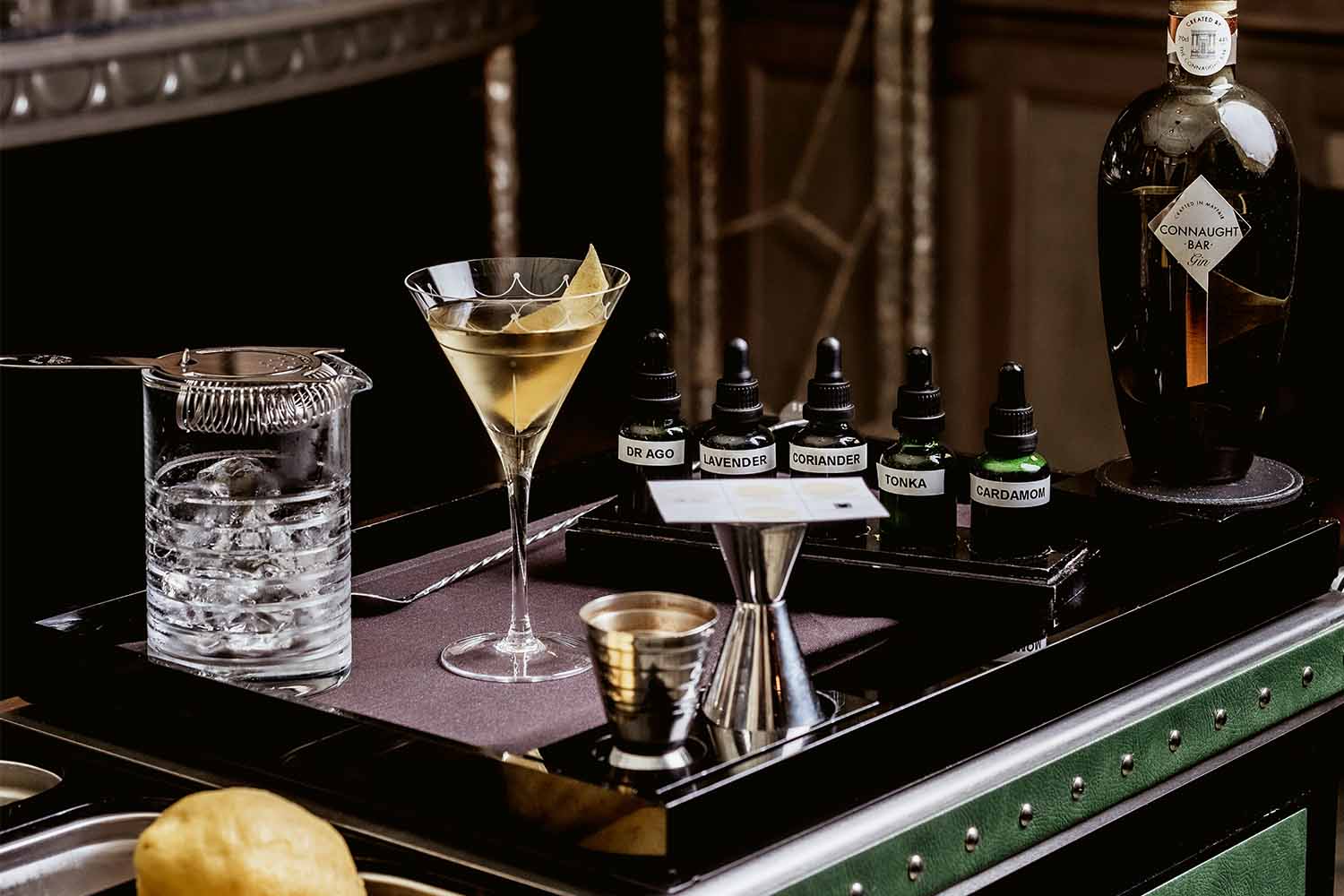
Whether it is the gin or vodka version, The Connaught Martini is an aromatized Martini that has been served following the same ritual since the day we opened the newly refurbished bar. It’s a distillation of the Connaught Bar ethos — it’s about approaching our guests. We want our new guests to get excited about what we do with our classic service, and we want our regular guests to feel comfortable and yet excited about trying something new.
The Connaught Martini
Prep Time: 5 mins
Servings: 1
Ingredients
- 2 ml (.5 tsp.) bitters of choice
- 15 ml (.5 oz.) vermouth blend
- 75 ml (2.5 oz.) gin or vodka of choice
- Lemon twist or green olive
Directions
-
-
To make a martini with a twist: Using a dropper, gently pour the bitters around the rim of a frozen martini glass or coupette. Combine the vermouth and spirit in a mixing glass filled two-thirds with large ice cubes and stir until well chilled. Strain into the prepared martini glass, raising the mixing glass high to add aeration to the drink and squeezing the lemon twist into the drink as the liquid passes into the glass. Garnish with the lemon twist.
-
To make a martini with an olive: Using a dropper, gently pour the bitters around the rim of a frozen martini glass or coupette. Prick the olive three times with a cocktail stick (toothpick) and let a little juice run out into the glass. Combine the vermouth and spirit in a mixing glass filled two-thirds with large ice cubes and stir until well chilled. Strain into the prepared martini glass, raising the mixing glass high to add aeration to the drink. Garnish with the olive skewered onto the cocktail stick.
-
Excerpted from The Connaught Bar © 2024 by Agostino Perrone. Photography © 2024 by Lateef Okunnu. Reproduced by permission of Phaidon. All rights reserved.
Every Thursday, our resident experts see to it that you’re up to date on the latest from the world of drinks. Trend reports, bottle reviews, cocktail recipes and more. Sign up for THE SPILL now.



